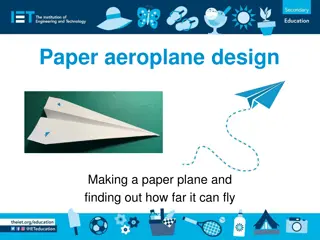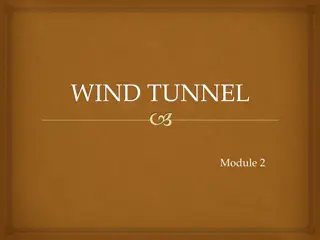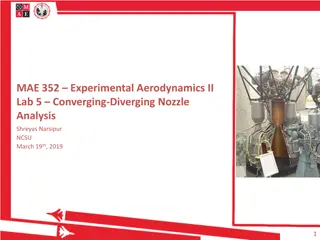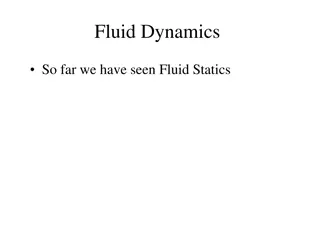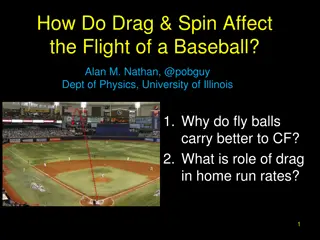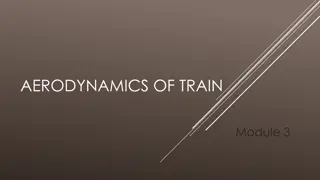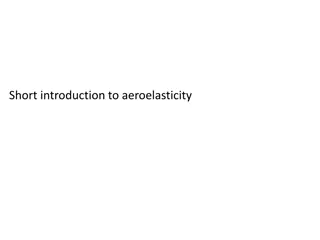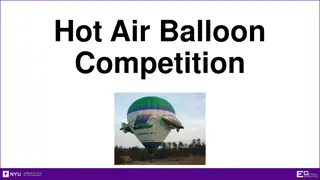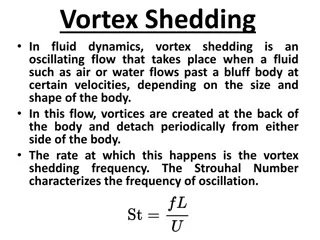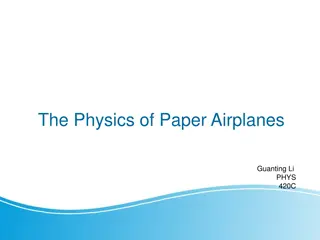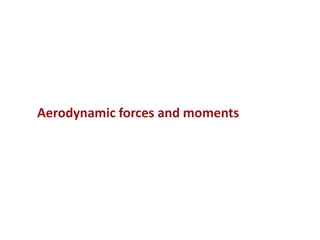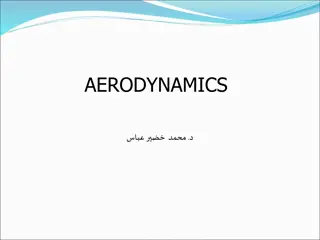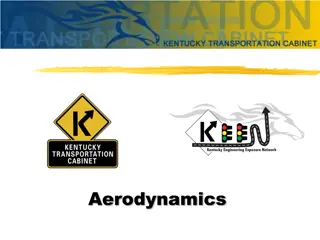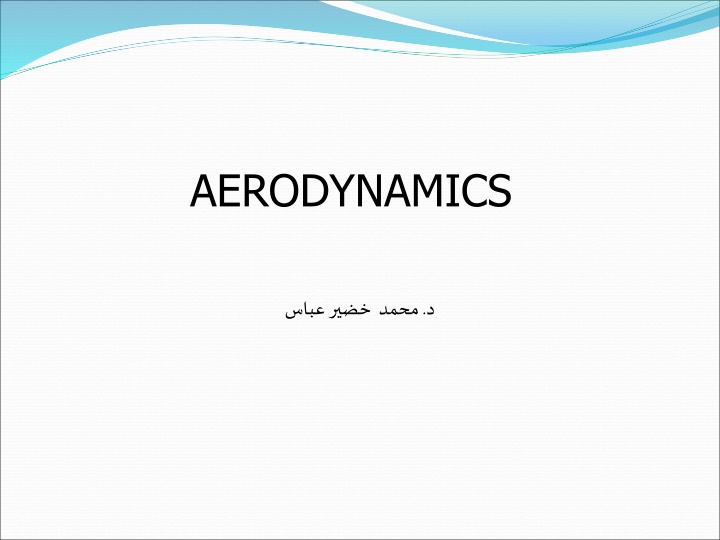
Understanding Aerodynamics Principles in Fluid Mechanics
Explore the fundamentals of aerodynamics, control volumes, continuity equations, momentum equations, Navier-Stokes equations, pathlines, streamlines, angular velocity, vorticity, and circulation in fluid mechanics. Learn about the key concepts and equations governing fluid flow behavior.
Download Presentation

Please find below an Image/Link to download the presentation.
The content on the website is provided AS IS for your information and personal use only. It may not be sold, licensed, or shared on other websites without obtaining consent from the author. If you encounter any issues during the download, it is possible that the publisher has removed the file from their server.
You are allowed to download the files provided on this website for personal or commercial use, subject to the condition that they are used lawfully. All files are the property of their respective owners.
The content on the website is provided AS IS for your information and personal use only. It may not be sold, licensed, or shared on other websites without obtaining consent from the author.
E N D
Presentation Transcript
Control volumes and fluid elements Control volume approach Fluid element approach
Continuity equation Fixed control volume Mass flow equation A V m n = Continuity equation in a finite space V t S + = V dS 0 dV Continuity equation at a point V t + = ( ) 0
Momentum equation Fixed control volume Original form is Newton s second law Momentum equation in integral form + ( = + + V V dS V dS f viscous F ) dV p dV t V S S V f is body force; Fviscous is viscous force on control surface X-component of the momentum equation in differential form (similar form for y- and z- component). p u t ( ) u + = + + V ( ) ( ) f F x x viscous x
Navier-Stokes equations The momentum equations for a viscous flow. Euler equations The momentum equations for a steady inviscid flow. p = V ( ) u x p = V ( ) v y p = V ( ) w z
Pathlines and streamlines Pathline Path of a fluid element. Streamline A curve whose tangent at any point is in the direction of the velocity vector at that point. For steady flow, pathlines and streamlines are identical.
Streamline equation for steady flow By definition, flow velocity V is parallel to directed segment of the streamline ds, so dsxV=0 k j i V ds = = 0 dx dy dz u v w = 0 wdy vdz = 0 udz wdx = 0 vdx udy dy= v For two-dimensional flow dx u
Angular velocity, vorticity and circulation Angular velocity and vorticity As a fluid element translate along a streamline, it may rotate as well as shape distorted. Angular velocity x z z y 2 1 w v u w v u = + + i j k x y Vorticity is defined to be 2 , also equal to xV. If xV 0, the flow is rotational, and 0. If xV=0, the flow is irrotational, and =0.
Circulation Definition V ds C Relation with lift: if an airfoil is generating lift, the circulation taken around a closed curve enclosing the airfoil will be finite. By Stokes theorem C S = ( V ds V dS )
If the flow is irrotational (xV=0) everywhere with the contour of integration, then = 0.
Stream function and velocity potential Stream function For two-dimensional steady flow, a streamline equation is given by setting the stream function equal to a contant. c y x = ) , ( For incompressible flow = = , u v y x
Velocity potential For an irrotational flow 0 = V = ( ) 0 We can find a scalar function such that V is given by the gradient of which is therefore called velocity potential. = , , V = = = u v w x y z
Relation between and Equipotential lines ( = constant) and streamlines ( = constant) are mutually prependicular.
Elliptical lift distribution Charateristic Elliptical circulation distribution 2 1 ) ( 0 2 y = y b where 0 is the circulation at the origin. Elliptical lift distribution 2 2 y = = ( ) ( ) 1 L y V y V 0 b Zero lift at the wing tips b b = = ( ) ( ) 0 2 2
Resulting aerodynamic properties By using the transformation y=b/2 cos , we obtain = 0 ( ) w 2 b which states that downwash is constant over the span for an elliptical lift distribution. Induced angle of attack CL i AR 2 b = AR = Aspect , ratio S
Induced drag coefficient 2 = i D C C L , AR which states that CD,I is proportional to the square of CL and inversely proportional to AR. For an elliptical lift distribution, the chord must vary elliptically along the span; that is, the wing planform is elliptical.
General lift distribution Characteristic Consider the transformation cos 2 b = y and assume ( N 1 = ) 2 sin bV A n n Fundamental equation at a given location 2 ) ( 1 0 c sin N N n b = + + 0 sin ( ) A n nA = 0 0 0 0 n L n ( ) sin 1 0
We may choose N different spanwise stations, then we can obtain N independent algebraic equations with N unknowns, namely, A1, A2, AN. Resulting aerodynamic properties Lifting coefficient 2 / 2 b = = AR ( ) C y dy A 1 L V S / 2 b Induced drag coefficient C C , AR 2 2 N A 2 = + = 1 ( where , ) n L n D i A 1
Define span efficiency factor e ) 1 ( e + = 1 2 L C = C , D i AR e Note that =0 and e=1 for the elliptical lift distribution. Hence, the lift distribution which yields minimum induced drag is the elliptical lift distribution.

